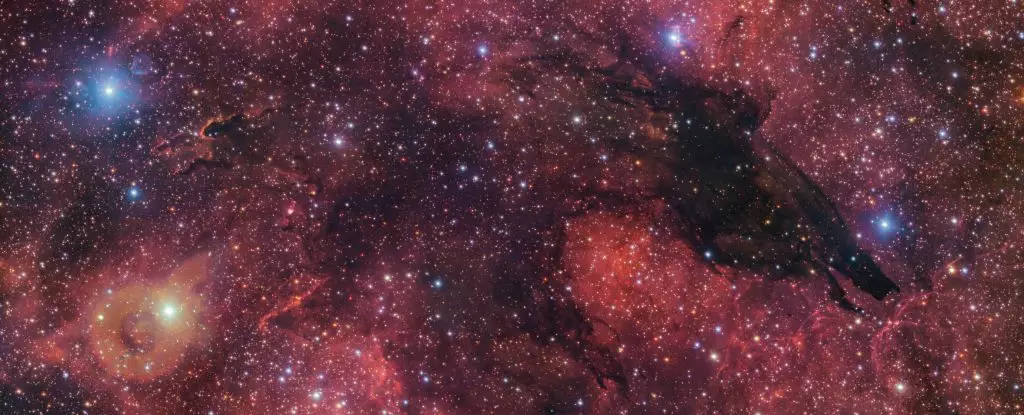In Norse mythology, Ragnarök signifies a catastrophic event that concludes the world as we know it, dominated by chaos and destruction. At its zenith, the myth tells of the great wolf Sköll, who is destined to devour the sun. This imagery vividly encapsulates the stark forces of annihilation present in our universe. However, if we shift our gaze from mythology to astronomy, we encounter a cosmic narrative filled with creation rather than destruction—the Dark Wolf Nebula, a celestial enigma that resides 5,300 light-years away.
Contrary to its ominous name, the Dark Wolf Nebula does not signify an end; instead, it serves as a cradle for the birth of stars. Nestled within the larger structure known as Gum 55 in the southern constellation of Scorpius, this dark nebula is far from a mere void. Instead of signifying an absence of life, it is composed of dense clouds of gas and dust where new celestial bodies are conceived, revealing the nuanced interplay between darkness and illumination in the cosmos.
Dark nebulae such as the Dark Wolf Nebula are intriguing for their unique properties. They do not emit or reflect visible light, rendering them nearly invisible to ordinary telescopes. However, this opacity does not equate to emptiness. These clouds are rich in material, forming the initial stages of stellar life. Their dense structure allows them to efficiently absorb and re-emit thermal energy in the infrared spectrum, leading to a gradual cooling process. The absence of sufficient thermal pressure induces gravitational forces to dominate, drawing together clumps of matter into ever-denser formations.
As gravity wins over the dispersive forces, these clumps of gas and dust evolve into protostars—bodies on the brink of igniting nuclear fusion. This stage in the stellar lifecycle is critical, embodying the paradoxical nature of creation born from obscurity. These nascent stars ultimately emerge from their dark cocoons, unleashing radiative energy and winds that further sculpt their surroundings while contributing to the next generation of cosmic entities.
Understanding how stars form within these obscure regions presents substantial challenges for astronomers. The very darkness that cradles these protostars also obscures them from our view. However, advancements in infrared technology, notably exemplified by space telescopes like the James Webb Space Telescope (JWST), have made it possible to penetrate this veil. JWST focuses on wavelengths of light that can traverse these dense clouds of dust, revealing the activities hidden within.
Nevertheless, a comprehensive understanding of star formation requires more than just infrared data. Observations spanning the entire electromagnetic spectrum are necessary to piece together the story of stellar evolution. Images captured by optical instruments, such as those from the Very Large Telescope (VLT), complement infrared observations by providing additional context about the nebula and its overall environment.
The cycle of star life is one that constantly balances creation and destruction, illuminating the universe in multifaceted ways. While the mythical Sköll may symbolize an end, the Dark Wolf Nebula illustrates that within darkness lies the potential for new beginnings. The stars birthed from these nebulae will eventually enrich their locales, returning their material to the interstellar medium, thereby completing a cosmic cycle that fuels the ongoing evolution of the galaxy.
In contemplating these cosmic phenomena, we recognize our role as observers—we strive to decipher the enigmas of the universe while learning from its inherent complexities. Such investigations not only deepen our understanding of the cosmos but also reflect on a broader philosophical journey: from the desolation implied in mythology to the awe-inspiring realms of creation within our own universe.
The Dark Wolf Nebula exemplifies this duality, standing as a testament to the intricate yet beautiful tapestry of cosmic life. Each observation, each star born from the womb of darkness, adds to our knowledge, continuously illuminating the path for future discoveries. In understanding where stars are born, we uncover not just the mechanisms of the universe, but the stories woven within our existence itself.

